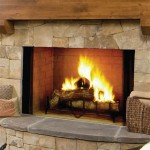How To Decorate a Small Living Room With a Corner Fireplace
Decorating a small living room presents unique challenges, especially when incorporating a corner fireplace. Fireplaces, while aesthetically pleasing and functional, often dominate the room's layout and visual space. Successfully integrating a corner fireplace into a small living room design requires careful consideration of furniture placement, color schemes, storage solutions, and the overall balance of the room. The goal is to create a space that feels both cozy and spacious, maximizing functionality without sacrificing style.
Careful planning is critical before initiating any decorating project in a small living room with a corner fireplace. This includes accurately measuring the room’s dimensions, noting the exact placement and size of the fireplace, and identifying any existing architectural features that might influence the design. A detailed floor plan, even a simple sketch, can be invaluable in visualizing different furniture arrangements and ensuring adequate circulation space. Consider the location of windows, doors, and electrical outlets, as these factors will further dictate furniture placement and lighting options. With a clear understanding of the room's spatial limitations, a more effective and visually appealing design can be achieved.
Maximizing Space Through Strategic Furniture Placement
The primary challenge in decorating a small living room with a corner fireplace is often determining the optimal placement of furniture. Considering the fireplace as a focal point is essential. However, avoid making it the sole determining factor in the room's design. Instead, consider the overall flow of the room and how people will interact within the space. One common strategy is to angle seating towards the fireplace, creating a natural conversation area. A sofa placed perpendicular to the fireplace, with additional seating arranged around it, can effectively accomplish this. Armchairs positioned to face both the sofa and the fireplace can further enhance the conversational flow.
Scale is critical when selecting furniture for a small living room. Overly large pieces will overwhelm the space and make it feel cramped. Opt instead for furniture with smaller proportions and clean lines. A loveseat or a smaller sofa may be more appropriate than a full-sized sectional. Similarly, choose armchairs with slim profiles and exposed legs to create a sense of lightness and openness. Consider using multi-functional furniture, such as an ottoman with built-in storage or a coffee table with drawers, to maximize the utility of each piece and minimize clutter.
Avoid blocking natural light with furniture placement. Keep walkways clear to allow for easy movement throughout the room. Arrange furniture in a way that allows for unobstructed views through windows and doors. Natural light is essential for making a small space feel larger and more inviting. Mirrors can also be strategically placed to reflect light and create the illusion of greater depth. Position a mirror across from a window, or behind a light source, to amplify the effect.
Consider the placement of the television in relation to the fireplace. Ideally, the television should not compete with the fireplace as a focal point. If possible, mount the television above the fireplace, ensuring proper heat shielding to protect the electronics. Alternatively, position the television on an adjacent wall, balancing the visual weight of the fireplace. Avoid placing the television directly across from the fireplace, as this can create an awkward viewing angle and detract from the overall aesthetic of the room.
Utilizing Color and Light to Enhance Visual Space
Color plays a significant role in how a small space is perceived. Lighter colors tend to reflect more light, making a room feel larger and more open. Conversely, darker colors absorb light, which can make a small space feel even smaller and more enclosed. Choose a light and neutral color palette for the walls, such as white, cream, or light gray, to maximize the feeling of spaciousness. These colors also provide a versatile backdrop for incorporating accent colors and decorative elements.
Introduce color and visual interest through accent pieces, such as throw pillows, blankets, rugs, and artwork. Choose a few complementary colors that work well together and repeat them throughout the room to create a cohesive and balanced look. Avoid using too many different colors, as this can create a sense of visual clutter and overwhelm the limited space. A well-chosen area rug can define the seating area and add warmth and texture to the room. Consider a rug with a light background and a subtle pattern to avoid overwhelming the space.
Proper lighting is crucial in a small living room. Layering different types of lighting can create a more inviting and functional space. Incorporate ambient lighting, such as overhead fixtures or recessed lighting, to provide overall illumination. Add task lighting, such as table lamps or floor lamps, to provide focused light for reading or other activities. Accent lighting, such as wall sconces or picture lights, can highlight architectural features or decorative elements. Use dimmer switches to control the intensity of the lighting and create different moods.
Consider the natural light available in the room. Maximize the amount of natural light by keeping windows clean and free of obstructions. Use sheer curtains or blinds to allow light to filter into the room while maintaining privacy. Avoid using heavy drapes, as they can block natural light and make the room feel darker and smaller. If natural light is limited, consider using daylight-simulating light bulbs to mimic the effects of natural light.
Optimizing Storage and Minimizing Clutter
Clutter is the enemy of a small living room. Keeping the space organized and free of unnecessary items is essential for creating a sense of spaciousness and calm. Incorporate storage solutions that are both functional and aesthetically pleasing. Built-in shelves or cabinets surrounding the fireplace can provide ample storage space for books, media equipment, and other items. Choose storage units with doors or drawers to conceal clutter and maintain a clean and organized look.
Vertical storage is particularly useful in small spaces. Tall bookshelves or cabinets can maximize storage capacity without taking up valuable floor space. Mount shelves on the walls to create additional storage and display space. Use baskets or bins to organize smaller items and keep them out of sight. Consider using floating shelves to create a minimalist look and free up floor space.
Choose furniture with built-in storage whenever possible. Ottomans with hidden storage compartments can provide a convenient place to store blankets, pillows, or other items. Coffee tables with drawers or shelves can offer additional storage space for magazines, remote controls, and other essentials. Select furniture that serves multiple purposes to maximize its functionality and minimize the need for additional storage.
Regularly declutter the living room to maintain a sense of spaciousness. Get rid of items that are no longer needed or used. Donate or sell items that are in good condition but no longer fit with the room's decor. Keep surfaces clear of clutter by storing items in their designated places. A few well-chosen decorative items can add personality to the room without overwhelming the space. Remember that less is often more when it comes to decorating a small living room.
Consider a minimalist approach to decorating the fireplace mantel. Avoid overcrowding the mantel with too many items. Instead, choose a few carefully selected pieces that complement the room's decor. A large mirror above the fireplace can create the illusion of more space and reflect light around the room. A simple vase of flowers or a few candles can add a touch of elegance and warmth. Keep the mantel clean and uncluttered to maintain a sense of order and balance.
By carefully considering furniture placement, color schemes, storage solutions, and the overall balance of the room, a small living room with a corner fireplace can be transformed into a cozy and inviting space. The focus should be on maximizing functionality without sacrificing style, creating a room that feels both spacious and comfortable.

How To Design Around A Corner Fireplace

How To Arrange Furniture With A Corner Fireplace Setting For Four Interiors

How To Arrange Furniture With A Corner Fireplace Setting For Four Interiors

Home Staging Project Orange County Ca Living Room

Top 15 Small Living Room With Fireplace And Tv Decorating Ideas Corner Furniture Layout Comfy Decor

Arranging Furniture With A Corner Fireplace Brooklyn Berry Designs

Corner Fireplace Ideas How To Design Around An Awkward Feature

How To Arrange Furniture With A Corner Fireplace Setting For Four Interiors

Corner Fireplace Ideas How To Design Around An Awkward Feature

6 Hints To Arrange A Living Room With Corner Fireplace Roomhints








